Table of Contents
Which flour is the most suitable for pancakes, what is tapioca, and what makes banana flour so special? Learn what the main differences are between the individual flours, what their use is, and what benefits they can boast with.
How is flour made?
Before flour appears in your kitchen, it has to go a long way. The process of processing flour may seem simple, but really high-quality flour requires a good dose of patience and precision. At the beginning, it is necessary to collect the grains or fruits from which the flour is made. This step itself consists of several stages of collection, sorting, purification and preparation. Subsequently, the grains and fruits undergo a crushing process until they take the form of a mostly white powder mass. In this final phase, you can also determine the consistency of the flour, on the basis of which it is later divided into fine, semi-coarse and coarse flour. [1] [2]
Types of flour based on their use
While it may seem that you can use all the flour for any baking or thickening, this is not the case. We divide flours on the basis of their use, namely into:
- Fine flour – use for pancakes, strudel, shortcrust pastry or thickening of soups
- Semi-coarse flour – sourdough and biscuit dough
- Coarse flour – dumplings and pasta
- Cake flour – has a fine and soft consistency, suitable for baking shortbread
- Bread flour – this is the most suitable flour for baking bread or yeasting
- Pasta flour – this is durum wheat flour to keep the pasta in the right shape and density [1] [2]

You might be interested in these products:
Differences between flours
There is a wide range of flours, from classic wheat flour, through almond flour to tapioca flour. See the differences between them and the benefits they can be proud of.
Wheat flour
Wheat, also rightly called the queen of cereals, is the most widely used cereal for flour production in the world. In the past, it was even used only as a privilege of rich families, and poor people were not entitled to it. Nowadays, however, there are many supporters of a healthy diet who exclude it from their diet, without realizing its benefits. [4]
Rich in important nutrients
Wheat is a rich source of fiber. Fiber is an important part of the diet because it prevents constipation, helps control blood sugar levels, protects against heart disease and even helps in weight loss. Wheat flour is also rich in vitamins B1, B3 and B5, riboflavin and folate. It also contains more iron, calcium, protein and other nutrients than many other types of flour, and is a source of beta-glucans and other beneficial substances. If you exclude wheat from your diet, you should make sure that you intake these important nutrients from other foods so that you do not have a lack of them. [4]
Ensures intestinal health
Wheat bran is very rich in insoluble fiber, which has beneficial effects on the human body. Studies suggest that this fiber may act as a prebiotic that keeps beneficial bacteria in our intestines. In addition, wheat, and thus wheat flour, can be helpful in digestive problems, reducing the time required to digest difficult-to-digest foods. [2] [4]
Use of wheat flour – most often used for the production of bread, pasta, pastries, cakes and biscuits.
Spelt flour
This type of cereal flour is more expensive but very healthy. It does not contain any chemicals, is easy to digest and has a delicate nutty taste. In fact, spelt is considered a separate type of wheat. Therefore, since they are the same species, they have a similar nutritional profile. However, spelt grains are more soluble in water, which makes digestion much easier for the body. It also has a high protein content, which makes it proud of its rich amino acid spectrum. Spelt flour also contains fat, which has a high composition of unsaturated fatty acids. [5]
Rich in fiber and beneficial substances
Spelt consists mainly of sugars, most of which are starch, making spelt flour products softer and denser. In combination with the high content of fiber that spelt flour can be proud of, it helps to slow down digestion and induces a feeling of satiety. In addition, high fiber intake is associated with a reduced risk of obesity, heart disease and type 2 diabetes. The fiber content of spelt flour is in fact slightly lower than that of wheat flour, but they contain a similar amount of soluble fiber. [5] [6] [7]
Since spelt generally contains high levels of minerals and vitamins, it can, for example, improve the immune system, lower blood sugar levels, as well as help with bad LDL cholesterol levels. It supplies the body with magnesium, zinc, manganese, calcium, potassium and B vitamins. [5] [6] [7]
Use of spelt flour – just like wheat flour, it is most often used for the production of bread, pasta, pastries, cakes and biscuits or pancakes.
Rye flour
Rye flour is the only flour, except for wheat and spelt flour, which you can use to make bread or yeast. Rye flour usually retains a large amount of nutrients, unlike refined wheat flour. From a nutritional point of view, the value of rye is comparable to the value of wheat. In some cases, however, its content of amino acid lysine is even more biologically superior. [8] [9]
Induces a feeling of satiety
Rye is a good source of fiber, which is especially important for people who do not have enough fiber in their diet. Rye fiber is richly equipped with non-cellulosic polysaccharides, which have an extremely high ability to bind water and quickly add a feeling of fullness and satiety. [9] [10]
Helps lower LDL cholesterol
Rye flour can improve several aspects of heart health, as some research links its intake to lower risk factors for heart disease. For example, an 8-week study compared the effects of eating rye and wheat flour on blood cholesterol levels. [11] The researchers found that rye flour was 14% more effective than wheat flour in reducing bad LDL cholesterol. [9] [10]
Helps with constipation
As rye flour is rich in fiber, it effectively contributes to the improvement of the digestive tract, as it absorbs water, and thus helps to improve the permeability of the intestines. Some studies even suggest that rye flour was more effective in treating constipation than wheat flour. Other studies have also found that fiber from rye flour can increase the level of short-chain fatty acids. These acids have been linked to various benefits, including weight loss, lower blood sugar and protection against colon cancer. [9] [10] [11]
Use of rye flour – most often used for bread production or yeasting.

Gluten-free flours
Most products are made from white or wheat flour. However, such products are unacceptable for celiacs or people on a gluten-free diet. Celiac disease is a serious autoimmune disease in which small intestinal cells are attacked by the body’s own immune system. This reaction occurs during the digestion of gluten, which is most often found in cereals. Fortunately, there are a number of gluten-free flours on the market that can be used to prepare popular dishes. If you would like to learn more about gluten, read our article Gluten – is it really harmful for each of us ?
Oat flour
Oat flour is a naturally gluten-free flour that has a silky texture and delicate taste. It is similar to wheat flour, except that it is gluten-free and has a higher protein content than other common flours. [12]
Rich in beta-glucans
Oats generally contain large amounts of beta-glucan, a type of soluble fiber that forms a coarse, gel solution in the intestine, causing a feeling of satiety. The main health benefits of beta-glucans include:
- reduction of LDL and total cholesterol levels
- reduced blood sugar
- increase in the feeling of satiety
- increasing the growth of good bacteria in the digestive tract [12] [13]
Rich in antioxidants
Oats, and therefore oat flour, are high in antioxidants and beneficial plant compounds called polyphenols. Most notable is a unique group of antioxidants, called avenanthramides, which are found almost exclusively in oats. Avenanthramides can help lower blood pressure levels by increasing nitric oxide production. This gas molecule helps to dilate blood vessels and leads to better blood flow. [12] [14] [15]
Use of oat flour – can be used to prepare all gluten-free dishes – cakes, biscuits, pancakes, etc.
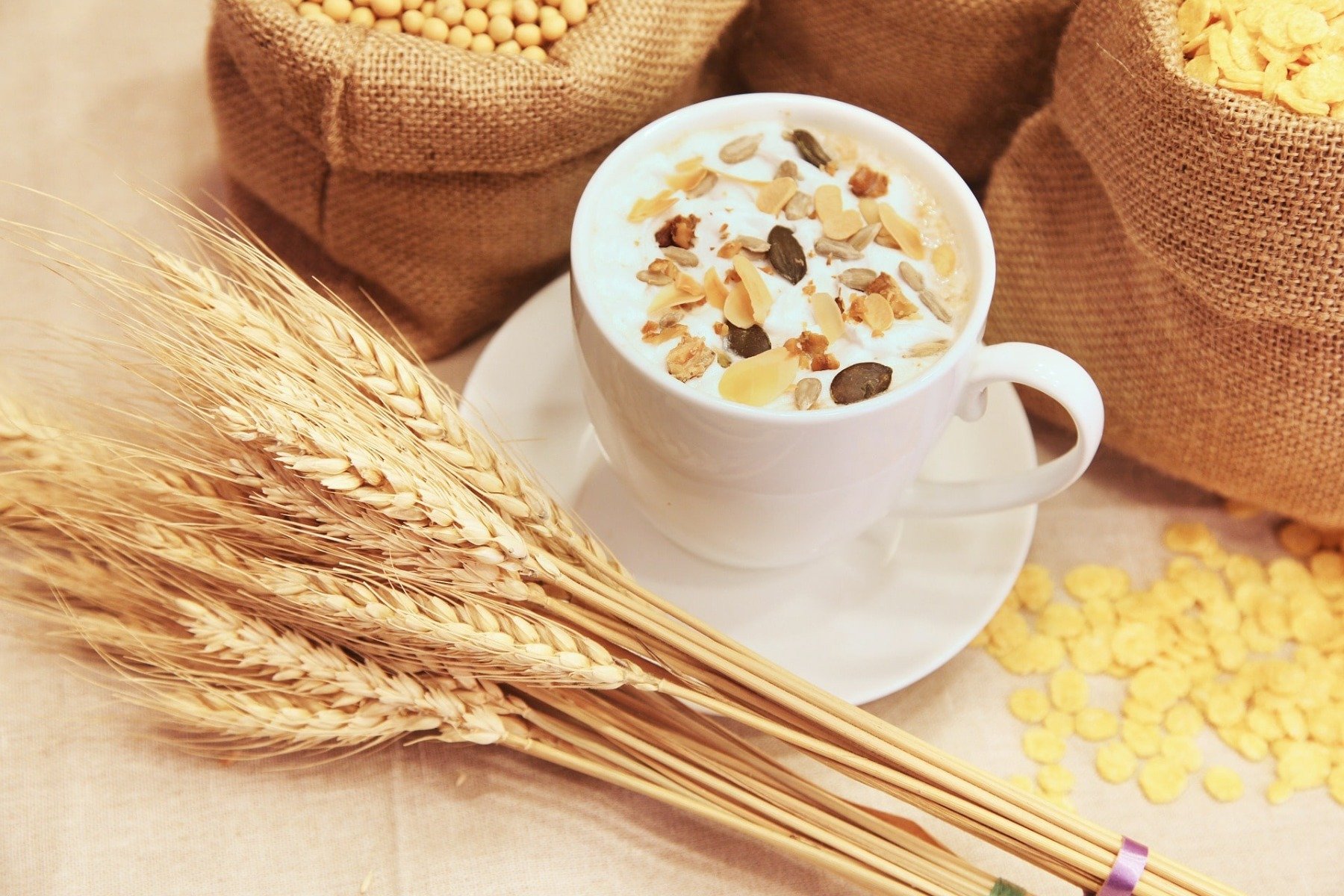
Coconut flour
Coconut flour is made by grinding and subsequent drying of coconut pulp. The resulting white powder looks similar to flour made from cereals and has a very delicate taste. Coconut flour has a relatively high content of protein, fiber and fat and a relatively low content of carbohydrates compared to other flours. In addition, it is completely gluten-free. [16]
Helps lose weight
Coconut flour can help with weight loss, as it contains medium chain triglycerides (MCT). These are actually fats that are not stored in the body like regular fat, because they travel directly to the liver, where they are involved in the production of energy. MCTs can also reduce appetite and are processed by your body differently from long-chain fats found in foods such as nuts. Thanks to this, MCT fats in coconut flour can help you burn a little more calories, as they do not turn into fat, but into pure energy. [16] [17]
Use of coconut flour – you can use coconut flour to prepare any dessert or pastry, but it is necessary to remember that it has a lower density than wheat flour, so it is necessary to use a thickener or more eggs to thicken while baking.
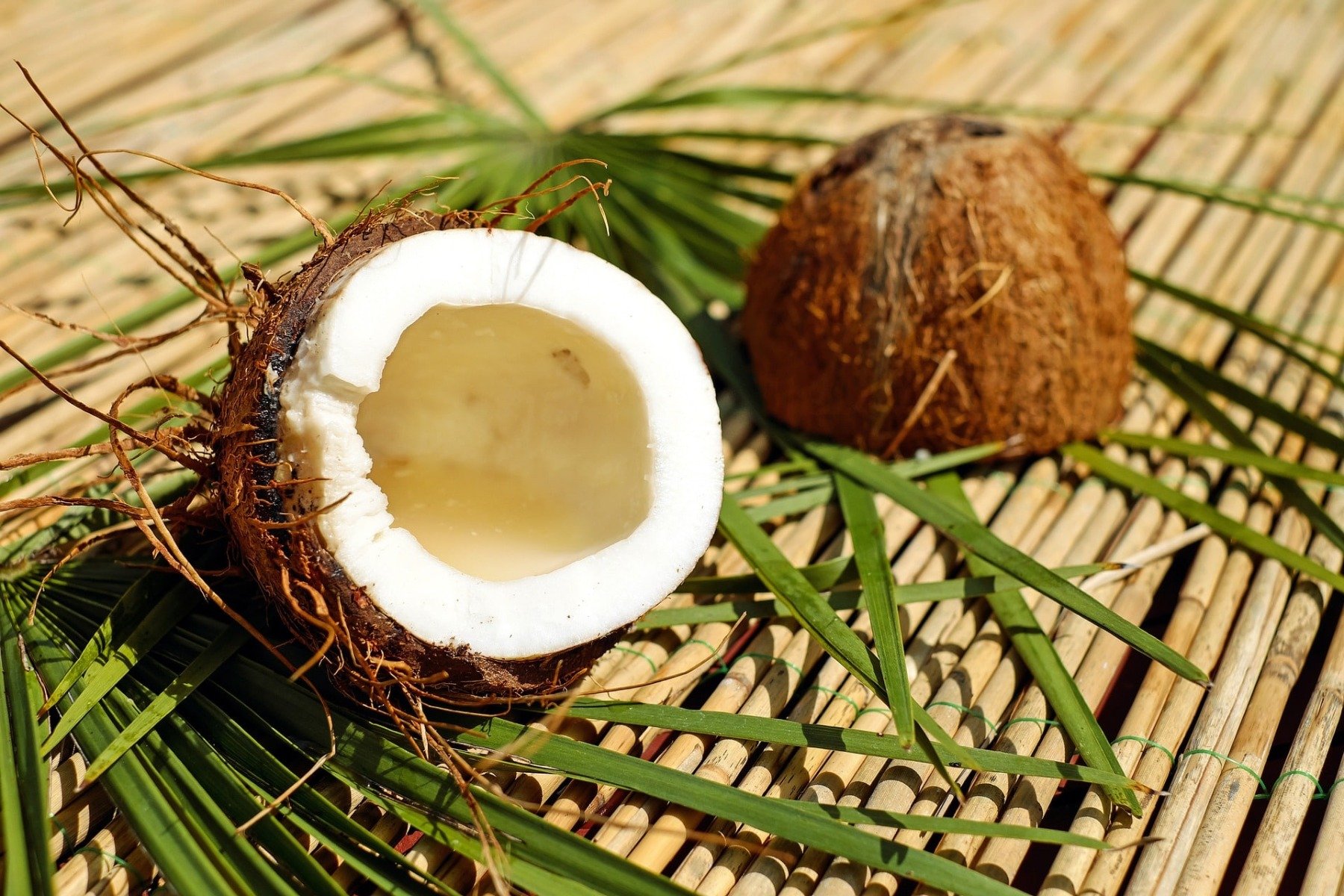
Buckwheat flour
Buckwheat belongs to a group of foods commonly called pseudocereals. Pseudocereals are seeds that are used and consumed just like cereal grains, but do not grow on grass. Buckwheat has become popular as a superfood due to its high content of minerals and antioxidants. [19] [20]
Improves blood sugar levels
Buckwheat has a fairly low to medium glycemic index. This means that it should be safe to consume buckwheat flour for most people with type 2 diabetes. In fact, studies have linked buckwheat intake to lower blood sugar levels in people with the disease. This effect is thought to be due to the unique compound D-chiro-inositol. Studies suggest that this soluble sugar makes cells more sensitive to insulin, which causes the cells to absorb sugar from the blood. [20] [21]
Promotes heart health
Buckwheat flour boasts with many compounds that are beneficial to heart health, such as rutin, magnesium, copper, fiber and certain proteins. Among cereals and pseudocereals, buckwheat is the richest source of rutin, an antioxidant that can, for example, reduce the risk of heart disease by preventing the formation of blood clots and lowering inflammation or blood pressure. One extensive study linked buckwheat intake to lower blood pressure, including lower LDL cholesterol levels and higher HDL cholesterol levels. [20] [22] [23]
Use of buckwheat flour – can be used for baking and cooking or thickening food. It is ideal as a substitute for wheat flour.
Rice flour
Rice flour is made by grinding white or brown rice and its biggest advantage is that it is very affordable. Rice flour is a common substitute for wheat flour. It is also used as a thickener in chilled or frozen food recipes because it inhibits the separation of liquids. In addition, brown rice is more nutritious and is a good source of fiber, vitamins and minerals such as calcium and zinc. [24]
Helps maintain healthy liver function
Rice flour contains choline, which helps transport cholesterol and triglycerides from the liver to places where the body lacks it. As a result, choline can help maintain a healthy liver. [24] [25]
Use of rice flour – most often used as a thickener.

Banana flour
A relatively less known gluten-free flour is banana flour. It is made from bananas and is used as an alternative to wheat flour. This flour is especially recommended by supporters of the paleo diet. Banana flour is made from green bananas and has a delicate taste of raw bananas. However, it loses this flavor after cooking and can therefore be used as a healthier alternative to white or processed wheat flour. [26] [27]
Rich in prebiotic fiber
Green bananas are known to be rich in prebiotic fiber, which is important for promoting intestinal health as well as reducing belly fat. Prebiotic fiber also improves digestion and is abundant in banana flour. [26] [27]
Rich in potassium
Potassium, which is found in bananas, is a mineral with several benefits, including maintaining heart health. It also increases muscle strength and metabolism. [26] [27]
Rich in resistant starch
Banana flour is extremely rich in resistant starch, so it can help diabetics improve insulin sensitivity and maintain blood sugar levels. This is because it is also stored in the large intestine. [26] [27]
Use of banana flour – you can use it as a substitute for wheat or white flour.
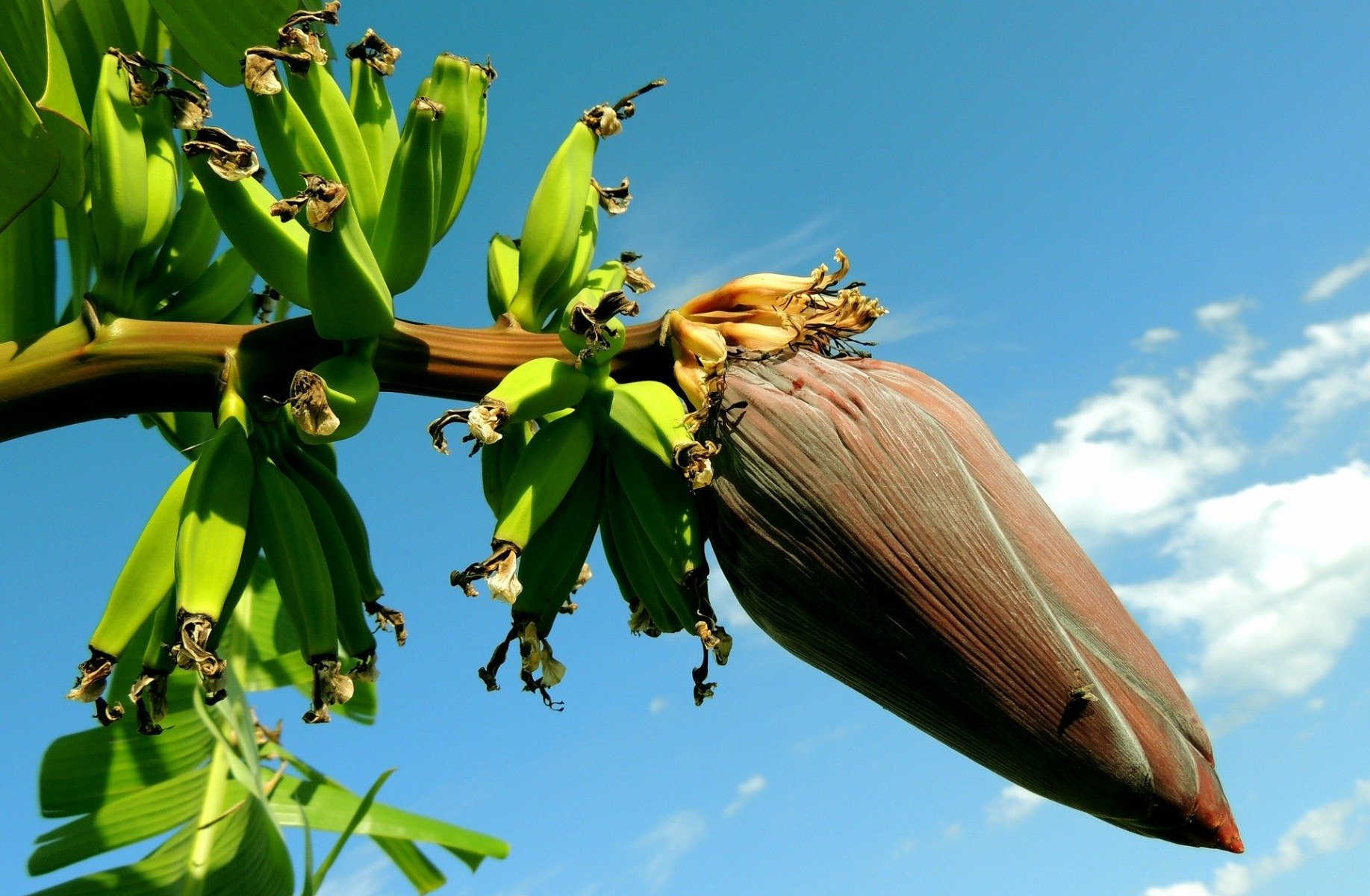
Tapioca flour
Tapioca is a starch extracted from the root of cassava, a tuber native to South America. Tapioca is almost pure starch and has very limited nutritional value. However, it is naturally gluten-free, so it can serve as a substitute for wheat. Tapioca is a dried product and is usually sold as white flour, pearls or flakes. [28]
Contains resistant starch
Tapioca flour is a natural source of resistant starch. It is resistant to digestion and acts as a fiber in the digestive system. Resistant starch is associated with a number of overall health benefits. It nourishes friendly bacteria in the intestines, thus reducing inflammation and the number of harmful bacteria. It can also lower blood sugar after a meal, improve glucose metabolism and also increase the feeling of fullness. [28] [29] [30]
Use of tapioca flour – used mainly for thickening food.
Almond flour
Almond flour is made from ground almonds. The process of flour formation begins by blanching almonds in boiling water to remove the skin. The almonds cleaned in this way are then crushed and sieved into fine flour. As this process is less demanding, you can comfortably make almond flour at home. Almond flour is extremely rich in healthy fats, proteins and vitamin E, which acts as an antioxidant. It prevents damage from free radicals, which accelerate aging and increase the risk of heart disease. [31] [32]
Improves blood sugar levels
Foods made from wheat are high in carbohydrates, low in fat and fiber. This can cause your blood sugar to rise. Almond flour, on the other hand, is low in carbohydrates but high in healthy fats and fiber. As a result, it has a low glycemic index, which means that it slowly releases sugar into the bloodstream and thus provides a permanent source of energy. In addition, almond flour is also rich in magnesium, which is involved in improving blood sugar control, reducing insulin resistance and blood pressure. [31] [33]
Helps lower cholesterol
An analysis of five studies found that those who ate almond flour meals had a decrease in LDL cholesterol of 5.79 mg compared to those who ate wheat flour meals. In addition, this decrease in LDL cholesterol also caused weight loss in the participants. [31] [34] [35]
Use of almond flour – most often used as a substitute for wheat flour in baking cakes, pancakes and desserts.
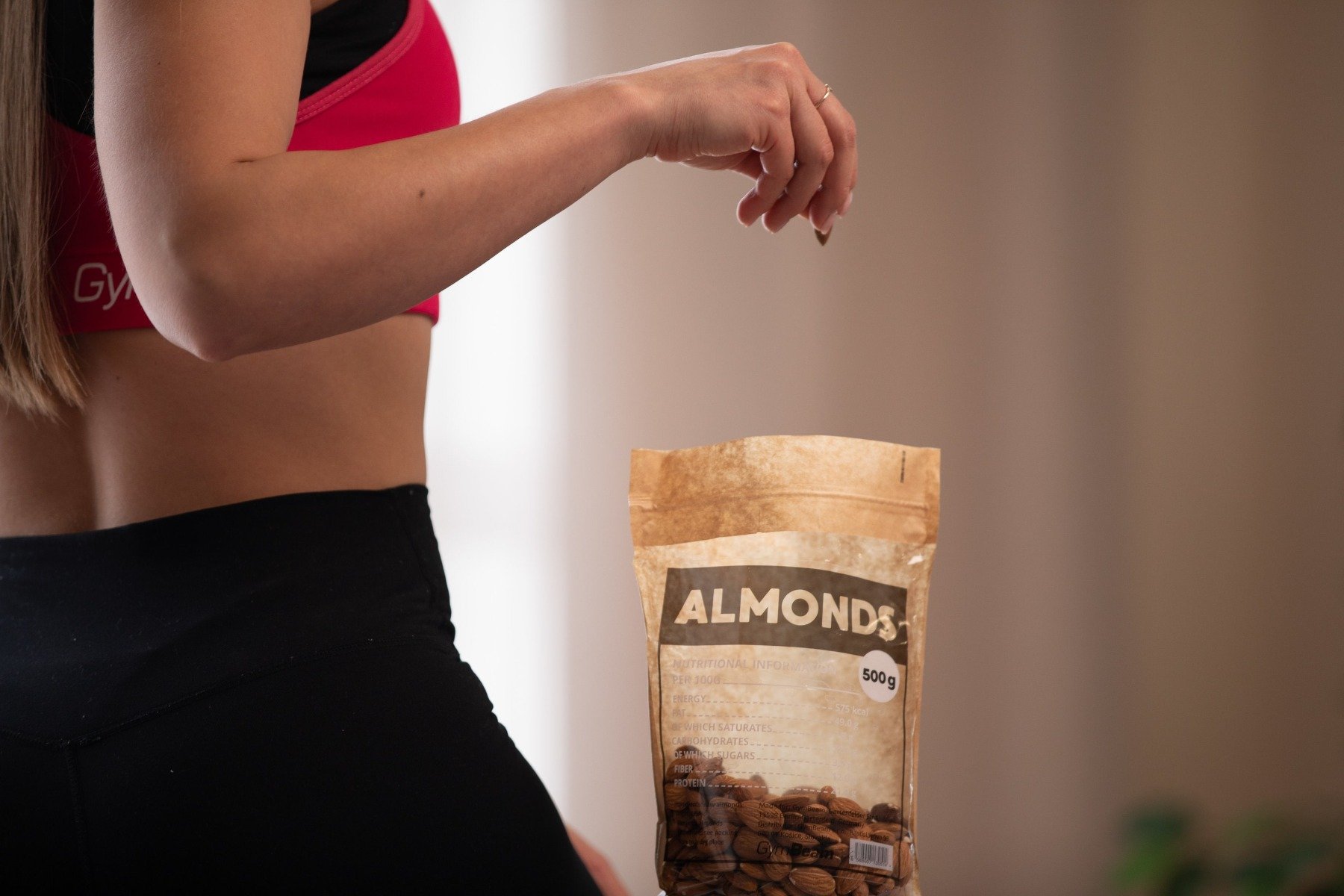
Flaxseed flour
Flaxseed flour is produced by removing oil from the seeds and grinding the flour from the remaining product. Compared to other flours, it contains a minimal amount of carbohydrates, which makes it excellent for reduction diets. In addition, flax seeds are a direct storehouse of fiber and quality plant proteins making the flour especially suitable for athletes. [36]
High in omega-3 fatty acids
Flax seeds are an ideal source of omega-3 for vegetarians and vegans who do not normally eat meat, so these healthy fats cannot be obtained, for example, from fish, in which they are abundant. As a result, flaxseed flour is also a source of alpha-linolenic acid (ALA), which our body cannot make, so we must intake it from the diet. Numerous studies declare that a sufficient supply of ALA results in a reduction in the risk of cardiovascular disease. Several studies have also linked the use of ALA to a lower risk of stroke. [36] [37] [38]
Use of flaxseed flour – thanks to its ability to gain volume in the liquid, it is especially suitable for thickening soups or sauces. However, physically active people can also add it to their protein drinks or smoothies.
Comparison of nutritional values of individual flours
In the following table we compared the nutritional values of different flours per 100 g: [39]
| Nutritional values | Calories | Protein | Carbohydrates | Fiber | Fat |
|---|---|---|---|---|---|
| Wheat flour | 340 kcal | 13 g | 72 g | 11 g | 2,5 g |
| Spelt flour | 345 kcal | 17 g | 64 g | 8 g | 2 g |
| Rye flour | 347 g | 11 g | 72 g | 13 g | 2 g |
| Oat flour | 404 kcal | 15 g | 66 g | 6,5 g | 9 g |
| Coconut flour | 358 kcal | 18 g | 17 g | 39 g | 16 g |
| Buckwheat flour | 335 kcal | 13 g | 71 g | 10 g | 3,1 g |
| Rice flour – brown | 363 kcal | 7,2 g | 76 g | 4,6 g | 2,8 g |
| Banana flour | 355 kcal | 4,1 g | 81 g | 5,7 g | 0,9 g |
| Tapioca flour | 350 kcal | 0,5 g | 86 g | 0,9 g | 0,5 g |
| Almond flour | 575 kcal | 20 g | 20 g | 11 g | 54 g |
| Flaxseed flour | 386 kcal | 37 g | 7,2 g | 38,6 g | 14,6 g |
We believe that through this article we have explained to you the differences that you should notice when choosing flour. What flour do you use most often? Let us know in the comments section, and if you liked the article, support it by sharing.
[1] Malia Frey - Flour Nutrition Facts and Health Benefits – https://www.verywellfit.com/flour-nutrition-facts-calories-and-health-benefits-4119166
[2] Kerri-Ann Jennings, MS, RD 9 Health Benefits of Eating Whole Grains - – https://www.healthline.com/nutrition/9-benefits-of-whole-grains
[3] Understanding flour types – https://www.weekendbakery.com/posts/understanding-flour-types/
[4] Atli Arnarson, PhD -Wheat 101: Nutrition Facts and Health Effects – https://www.healthline.com/nutrition/foods/wheat
[5] Helen West, RD (UK) - What is Spelt, and is it Good For You? – https://www.healthline.com/nutrition/what-is-spelt
[6] Joanne Slavin - Fiber and Prebiotics: Mechanisms and Health Benefits – https://www.ncbi.nlm.nih.gov/pmc/articles/PMC3705355/
[7] Biskup I, Gajcy M, Fecka - The potential role of selected bioactive compounds from spelt and common wheat in glycemic control. – https://www.ncbi.nlm.nih.gov/pubmed/29068605
[8] Why eat rye bread? – https://www.cosmopolitan.com/uk/body/diet-nutrition/a25359/health-benefits-of-rye-bread_/
[9] Ryan Raman, MS, RD - Is Rye Bread Healthy? – https://www.healthline.com/nutrition/is-rye-bread-healthy
[10] Rosén LA, Östman EM, Shewry PR, Ward JL, Andersson AA, Piironen V, Lampi AM, Rakszegi M, Bedö Z, Björck IM - Postprandial glycemia, insulinemia, and satiety responses in healthy subjects after whole grain rye bread made from different rye varieties. – https://www.ncbi.nlm.nih.gov/pubmed/21961929
[11] Ola Kally Magnusdottir - Whole Grain Rye Intake, Reflected by a Biomarker, Is Associated with Favorable Blood Lipid Outcomes in Subjects with the Metabolic Syndrome – A Randomized Study – https://www.ncbi.nlm.nih.gov/pmc/articles/PMC4207773/
[12] Hrefna Palsdottir, MS - 9 Health Benefits of Eating Oats and Oatmeal
[13] Whitehead A, Beck EJ, Tosh S, Wolever TM - Cholesterol-lowering effects of oat β-glucan: a meta-analysis of randomized controlled trials. – https://www.ncbi.nlm.nih.gov/pubmed/25411276
[14] Nie L, Wise ML, Peterson DM, Meydani M - Avenanthramide, a polyphenol from oats, inhibits vascular smooth muscle cell proliferation and enhances nitric oxide production. – https://www.ncbi.nlm.nih.gov/pubmed/16139284
[15] Meydani M - Potential health benefits of avenanthramides of oats. – https://www.ncbi.nlm.nih.gov/pubmed/19941618
[16] Alina Petre, MS, RD (NL) - Coconut Flour: Nutrition, Benefits, and More – https://www.healthline.com/nutrition/coconut-flour
[17] Mumme K, Stonehouse W. - Effects of medium-chain triglycerides on weight loss and body composition: a meta-analysis of randomized controlled trials. – https://www.ncbi.nlm.nih.gov/pubmed/25636220
[18] DebMandal M, Mandal S - Coconut (Cocos nucifera L.: Arecaceae): in health promotion and disease prevention. – https://www.ncbi.nlm.nih.gov/pubmed/21771462
[19] The Health Benefits of Buckwheat – https://www.naturespath.com/en-us/blog/health-benefits-of-buckwheat/
[20] Atli Arnarson, PhD - Buckwheat 101: Nutrition Facts and Health Benefits – https://www.healthline.com/nutrition/foods/buckwheat
[21] Hosaka T, Nii Y, Tomotake H, Ito T, Tamanaha A, Yamasaka Y, Sasaga S, Edazawa K, Tsutsumi R, Shuto E, Okahisa N, Iwata S, Sakai T. - Extracts of common buckwheat bran prevent sucrose digestion. – https://www.ncbi.nlm.nih.gov/pubmed/22472288
[22] Yang N, Ren G. - Application of near-infrared reflectance spectroscopy to the evaluation of rutin and D-chiro-Inositol contents in tartary buckwheat. – https://www.ncbi.nlm.nih.gov/pubmed/18167074
[23] He J, Klag MJ, Whelton PK, Mo JP, Chen JY, Qian MC, Mo PS, He GQ. - Oats and buckwheat intakes and cardiovascular disease risk factors in an ethnic minority of China. – https://www.ncbi.nlm.nih.gov/pubmed/7840076
[24] Dr. Josh Axe, DC, DMN, CNS - Is Rice Flour Good for You? Pros & Cons of Rice Flour Nutrition – https://draxe.com/nutrition/rice-flour/
[25] Ikawa-Yoshida A, Matsuo S, Kato A, Ohmori Y, Higashida A, Kaneko E, Matsumoto M - Hepatocellular carcinoma in a mouse model fed a choline-deficient, L-amino acid-defined, high-fat diet.– https://www.ncbi.nlm.nih.gov/pubmed/28895242
[26] Banana Flour: The Gluten-Free Weight Loss-Friendly Flour That May Also Regulate Blood Sugar – https://food.ndtv.com/food-drinks/banana-flour-the-gluten-free-weight-loss-friendly-flour-that-may-also-regulate-blood-sugar-1999062
[27] 7 Reasons Why We’re Going Bananas for Green-Banana Flour – https://www.savoirflair.com/beauty/276405/green-banana-flour-benefits
[28] Adda Bjarnadottir, MS, RDN (Ice) - What Is Tapioca and What Is It Good For? – https://www.healthline.com/nutrition/tapioca
[29] Kato R, Tachibe M, Sugano S, Kishida T, Ebihara K. - High-hydroxypropylated tapioca starch improves insulin resistance in genetically diabetic KKAy mice. – https://www.ncbi.nlm.nih.gov/pubmed/19397723
[30] Wronkowska M, Soral-Smietana M, Biedrzycka E. - Utilization of resistant starch of native tapioca, corn and waxy corn starches and their retrograded preparations by Bifidobacterium. – https://www.ncbi.nlm.nih.gov/pubmed/18097846
[31] Ryan Raman, MS, RD - Why Almond Flour Is Better Than Most Other Flours – https://www.healthline.com/nutrition/almond-flour
[32] V. Lobo, A. Patil, A. Phatak, and N. Chandra - Free radicals, antioxidants and functional foods: Impact on human health – https://www.ncbi.nlm.nih.gov/pmc/articles/PMC3249911/
[33] Uwe Gröber, Joachim Schmidt and Klaus Kisters - Magnesium in Prevention and Therapy – https://www.ncbi.nlm.nih.gov/pmc/articles/PMC4586582/
[34] Almonds Have a Neutral Effect on Serum Lipid Profiles: A Meta-Analysis of Randomized Trials – https://www.sciencedirect.com/science/article/abs/pii/S0002822309001606
[35] Zohreh Abazarfard, Mousa Salehi, and Sareh Keshavarzi - The effect of almonds on anthropometric measurements and lipid profile in overweight and obese females in a weight reduction program: A randomized controlled clinical trial – https://www.ncbi.nlm.nih.gov/pmc/articles/PMC4116579/
[36] Verena Tan, RD, PhD - Top 10 Health Benefits of Flax Seeds – https://www.healthline.com/nutrition/benefits-of-flaxseeds
[37] Pan A, Chen M, Chowdhury R, Wu JH, Sun Q, Campos H, Mozaffarian D, Hu FB. - α-Linolenic acid and risk of cardiovascular disease: a systematic review and meta-analysis. – https://www.ncbi.nlm.nih.gov/pubmed/23076616
[38] Blondeau N, Lipsky RH, Bourourou M, Duncan MW, Gorelick PB, Marini AM - Alpha-linolenic acid: an omega-3 fatty acid with neuroprotective properties-ready for use in the stroke clinic? – https://www.ncbi.nlm.nih.gov/pubmed/25789320
[39] Find Nutritional Value of a Product – https://www.nutritionvalue.org/


Add a comment